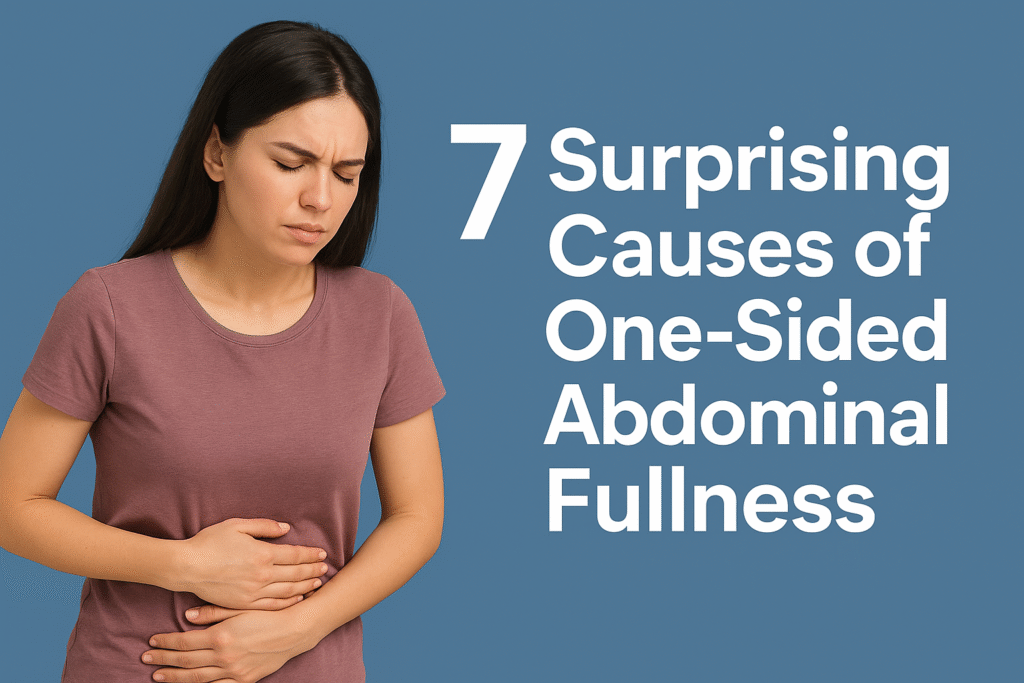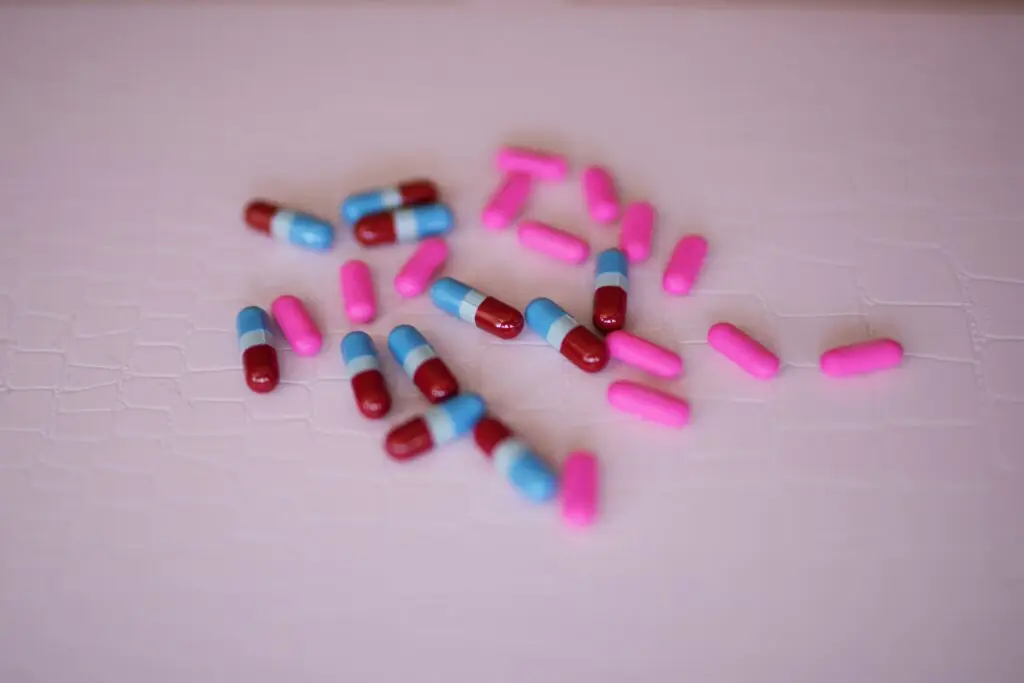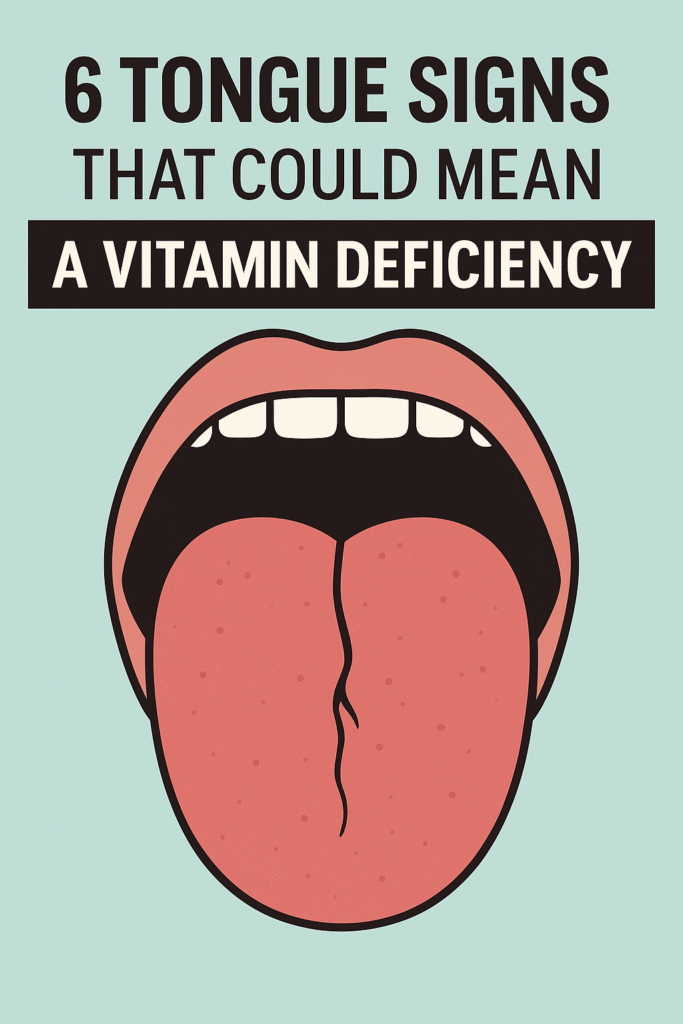⚠️ Affiliate Disclaimer: This post may contain affiliate links, which means I may earn a small commission — at no extra cost to you — if you make a purchase through one of these links. I only recommend products or services I genuinely trust and believe can provide value. Thank you for supporting My Medical Muse!
7 Surprising Causes of One-Sided Abdominal Fullness and How to Relieve It Fast

Have you ever felt a strange heaviness or pressure on just one side of your stomach and wondered what’s going on? That uneven fullness can be unsettling, leaving you uncomfortable, distracted, and sometimes even worried about your health. While occasional bloating or mild digestive discomfort is common, persistent or one-sided fullness often signals that something in your digestive system or nearby organs needs attention.
Your abdomen is a complex landscape, housing vital organs like the liver, stomach, intestines, kidneys and in women, reproductive organs. Because each area serves a different function, pinpointing where the sensation occurs can give important clues about the cause.
In this guide, we’ll break down the most common reasons people experience one-sided fullness, explain how to recognize potentially serious conditions, and offer practical steps for relief. By understanding what your body is trying to tell you, you can take control of your digestive health and get the reassurance you need.
Whether it’s a minor bloating episode after a large meal or a more persistent discomfort that disrupts daily life, this article will help you identify the underlying cause and know when it’s time to seek professional care.
Understanding the Anatomy of Your Abdomen
Before exploring why you might feel fullness on one side of your stomach, it helps to understand the layout of your abdomen. Think of your abdomen as a complex map divided into four main quadrants, each housing specific organs that can contribute to discomfort or a sensation of pressure.
- Right Upper Quadrant (RUQ): This area contains the liver, gallbladder, part of the pancreas, and portions of the intestines. Issues in any of these organs like gallstones or liver inflammation can produce fullness or discomfort here.
- Left Upper Quadrant (LUQ): This quadrant includes the stomach, spleen, part of the pancreas, and segments of the intestines. Problems such as gastritis, ulcers or pancreatic irritation often manifest as fullness in this area.
- Right Lower Quadrant (RLQ): The appendix, parts of the intestines, and reproductive organs in women are located here. Appendicitis, ovarian cysts, or intestinal disturbances may cause localized pressure or pain in this region.
- Left Lower Quadrant (LLQ): Contains parts of the intestines and, in women, reproductive organs. Conditions like constipation, diverticulitis, or ovarian issues can create fullness or discomfort on this side.
The type of fullness, whether bloating, pressure, heaviness or mild pain can provide vital clues about the underlying cause. Paying attention to where it occurs, how intense it is, and what triggers it can help guide your next steps for relief or evaluation.
Common Causes of Fullness on One Side of the Stomach
1. Indigestion and Gas
Indigestion, medically known as dyspepsia, is one of the most frequent reasons for feeling localized fullness. Gas can build up in specific parts of your intestines, creating a sensation of pressure or bloating on one side.
Symptoms may include:
- Burping or belching
- Stomach discomfort or heaviness after meals
- Feeling “stuffed” even after small portions
Possible triggers:
- Eating too quickly or overeating
- High-fat, fried, or spicy foods
- Carbonated drinks
- Stress, anxiety, or irregular eating patterns
In many cases, modifying eating habits and reducing stress can significantly ease these symptoms.
2. Constipation
Constipation occurs when bowel movements become infrequent, hard, or difficult to pass. Depending on which part of the colon is affected, it can lead to one-sided abdominal fullness:
- Right-sided fullness: Often linked to the ascending colon
- Left-sided fullness: Often associated with the descending colon or sigmoid colon
Symptoms may include:
- Infrequent or difficult bowel movements
- Hard, lumpy stools
- Cramping or discomfort in the affected area
Management: Increasing dietary fiber, staying well-hydrated and engaging in regular physical activity usually helps relieve constipation and the associated fullness.
3. Gastric Issues
Problems in the stomach itself often manifest as left upper abdominal fullness. Common gastric conditions include:
- Gastritis: Inflammation of the stomach lining caused by infections, prolonged NSAID use, or alcohol consumption.
- Peptic ulcers: Open sores in the stomach lining that can produce localized bloating or pressure.
Symptoms may include:
- Nausea or vomiting
- Heartburn or acid reflux
- Loss of appetite or feeling full quickly
Proper diagnosis and management, sometimes including medication and dietary changes, are essential for these conditions.
4. Gallbladder and Liver Conditions
Fullness on the right upper side of the abdomen may signal gallbladder or liver problems.
- Gallstones: Hard deposits in the gallbladder can block bile flow, leading to fullness, bloating or pain, often after consuming fatty foods.
- Liver enlargement (hepatomegaly): Swelling of the liver can create a persistent feeling of pressure or heaviness.
Symptoms may include:
- Pain radiating to the right shoulder or back
- Nausea or vomiting
- Jaundice, characterized by yellowing of the skin or eyes
Early medical evaluation is important for these conditions, as complications like gallbladder inflammation or liver dysfunction can develop if untreated.
5. Kidney Problems
The kidneys are positioned toward the back of the abdomen on both sides and play a crucial role in filtering waste from the blood. Problems affecting the kidneys can sometimes manifest as a sensation of fullness on one side of the abdomen.
- Kidney stones: These are hard mineral deposits that can intermittently block urine flow, causing sharp or dull pressure, fullness or discomfort on one side. Pain may radiate toward the lower back or groin.
- Kidney infections (pyelonephritis): These infections can inflame the kidneys, producing localized fullness along with fever and urinary symptoms.
Symptoms to watch for:
- Pain radiating from the back to the lower abdomen or groin
- Frequent or painful urination
- Blood in the urine
Prompt medical attention is essential, especially if you notice severe pain, fever, or blood in the urine, as untreated kidney conditions can lead to complications.
6. Ovarian or Reproductive Health Issues (in Women)
For women, one-sided abdominal fullness may often be linked to reproductive organs. The ovaries, fallopian tubes, and uterus are prone to certain conditions that can cause localized pressure or bloating.
- Ovarian cysts: Fluid-filled sacs that can grow on one ovary, causing pressure, bloating, or mild pain on one side.
- Ectopic pregnancy: A pregnancy that occurs outside the uterus, usually in a fallopian tube, can present with one-sided fullness and is a medical emergency.
- Pelvic inflammatory disease (PID): An infection of the reproductive organs that may create tenderness, swelling, or pressure on one side.
Symptoms to watch for:
- Irregular menstrual cycles
- Lower abdominal or pelvic pain
- Nausea, dizziness, or lightheadedness
Women experiencing sudden or severe one-sided abdominal fullness should seek immediate medical evaluation to rule out serious conditions like ectopic pregnancy.
7. Hernias
A hernia occurs when an internal organ, often part of the intestine, pushes through a weak spot in the abdominal wall. This can produce a localized feeling of fullness, pressure, or discomfort on one side.
Symptoms may include:
- Noticeable bulging or swelling in the affected area
- Discomfort or aching when lifting, bending, or coughing
- Pain that worsens with physical activity
Hernias may require surgical repair, particularly if they cause persistent pain or complications like intestinal obstruction.
8. Intestinal Obstruction or Irritable Bowel Syndrome (IBS)
Certain conditions affecting the intestines can create localized fullness:
- Intestinal obstruction: A partial or complete blockage of the intestines can cause one-sided fullness, severe cramping, and constipation. This condition is often acute and requires prompt medical attention.
- Irritable bowel syndrome (IBS): A chronic disorder affecting intestinal function can lead to bloating, gas, and uneven fullness depending on which part of the intestines is affected.
Symptoms to watch for:
- Cramping or sharp abdominal pains
- Noticeable changes in bowel habits, including constipation or diarrhea
- Temporary relief after passing gas or a bowel movement
IBS often responds to dietary adjustments, stress management, and sometimes medications, while obstructions require urgent medical evaluation.
Less Common but Serious Causes
Although most causes of one-sided fullness are minor, persistent or severe fullness may indicate more serious conditions, including:
- Appendicitis: Typically begins as discomfort near the belly button and shifts to the right lower abdomen. Often accompanied by nausea, fever, and worsening pain.
- Pancreatitis: Inflammation of the pancreas can produce left upper abdominal fullness, radiating pain to the back, nausea, and vomiting.
- Abdominal tumors: Both benign and malignant growths may exert pressure on one side of the abdomen, causing persistent fullness.
Red flags that require urgent medical attention:
- Severe or worsening abdominal pain
- Persistent vomiting or nausea
- Unexplained weight loss
- Blood in stool or vomit
- Fever or jaundice (yellowing of skin or eyes)
Lifestyle and Dietary Factors That Contribute to One-Sided Fullness
Everyday habits can make fullness worse or trigger episodes of one-sided abdominal pressure. Common contributing factors include:
- Overeating or consuming irregular meals
- High-fat, high-sugar, or heavily processed foods
- Carbonated beverages that increase intestinal gas
- Sedentary lifestyle with minimal physical activity
- Stress and anxiety, which can slow digestion and increase bloating
By addressing these factors, eating smaller, balanced meals, exercising regularly and managing stress, you can often reduce episodes of localized fullness and improve overall digestive comfort.
Home Remedies and Self-Care
For many mild cases of one-sided fullness, simple self-care strategies can make a significant difference. These remedies aim to reduce bloating, improve digestion, and relieve pressure without medical intervention:
- Eat smaller, more frequent meals: Large meals can stretch the stomach and intestines, leading to discomfort. Eating smaller portions throughout the day helps prevent overloading your digestive system.
- Chew food thoroughly: Proper chewing reduces swallowed air, improves digestion, and allows enzymes in saliva to start breaking down food efficiently.
- Stay hydrated: Drinking sufficient water supports digestion, prevents constipation, and helps your intestines move waste effectively.
- Exercise regularly: Gentle physical activity, like walking or yoga, encourages movement of gas through the digestive tract and eases bloating.
- Avoid carbonated drinks: Soda and other fizzy drinks introduce excess gas into the intestines, increasing bloating and discomfort.
- Use heat therapy: A warm compress or heating pad on the affected area can relax muscles, reduce cramping, and alleviate mild fullness or pressure.
Implementing these habits consistently can prevent minor digestive issues from escalating into persistent discomfort.
When to Seek Medical Attention
While mild fullness can often be managed at home, certain warning signs require immediate professional evaluation. You should contact a healthcare provider if you experience:
- Sharp, persistent, or worsening pain that does not improve with rest or over-the-counter remedies
- Nausea or vomiting that persists or interferes with your ability to eat or drink
- Fever, chills, or unexplained weight loss
- Blood in vomit, urine, or stool
- Jaundice, indicated by yellowing of the eyes or skin
Prompt medical attention is critical for ruling out serious conditions such as gallstones, appendicitis, ovarian cysts, pancreatitis, or intestinal obstruction. Early diagnosis improves treatment outcomes and reduces complications.
Diagnostic Approaches Your Doctor May Use
When it comes to one-sided abdominal fullness, accurately identifying the underlying cause is crucial. Healthcare providers typically use a combination of careful physical examination and targeted diagnostic tests:
- Physical examination: The doctor will palpate (press) different areas of your abdomen to detect tenderness, swelling, masses, or other abnormal findings. This helps localize the issue and guides further testing.
- Blood tests: These assess liver, pancreas, kidney, and overall metabolic function. Blood tests can reveal infections, inflammation, or organ dysfunction that may be contributing to your symptoms.
- Imaging studies: Ultrasound, CT scans, or MRI scans provide detailed images of abdominal organs. They can detect gallstones, cysts, tumors, organ enlargement, or structural abnormalities.
- Endoscopy or colonoscopy: These procedures allow doctors to examine the interior of the stomach, intestines, and colon for ulcers, inflammation, blockages, or other abnormalities.
- Urine tests: These are particularly helpful for identifying kidney infections, stones, or other urinary tract issues that may manifest as one-sided fullness.
By combining these approaches, doctors can pinpoint the exact source of your discomfort and tailor a treatment plan that addresses both immediate symptoms and long-term health.
Medical Treatments
Treatment for one-sided abdominal fullness depends entirely on the root cause. Options range from conservative approaches to more invasive interventions:
- Medication: Depending on the diagnosis, your doctor may prescribe antacids, proton pump inhibitors, antibiotics, or anti-inflammatory medications. These are commonly used for conditions like gastritis, peptic ulcers, infections, or inflammatory disorders.
- Surgical intervention: Certain conditions, such as gallstones, hernias, appendicitis, or large ovarian cysts, may require surgical correction. Timely surgery can prevent complications and relieve persistent discomfort.
- Lifestyle changes: Simple adjustments like improving diet, staying hydrated, exercising regularly and managing stress can significantly reduce recurrence of digestive issues.
- Management of chronic conditions: Disorders such as IBS, chronic gastritis, or liver disease often require ongoing care. This may include regular monitoring, long-term medications, dietary modifications and stress management strategies to prevent flare-ups.
Effective treatment balances short-term symptom relief with long-term strategies that reduce recurrence and promote overall digestive health.
Preventive Measures
Preventing episodes of one-sided fullness largely involves maintaining digestive health and addressing lifestyle factors that contribute to discomfort. Key strategies include:
- Maintain a balanced, fiber-rich diet: Incorporate whole grains, fruits, and vegetables to support regular bowel movements, reduce bloating, and improve gut health.
- Limit alcohol and processed foods: Excessive consumption of alcohol or processed foods can irritate the digestive tract and contribute to fullness and bloating.
- Stay hydrated: Drinking enough water aids digestion, prevents constipation, and helps the intestines move waste efficiently.
- Exercise regularly: Physical activity improves digestion, promotes healthy bowel function, and helps manage body weight.
- Manage stress: Stress can exacerbate digestive problems. Techniques such as meditation, deep breathing exercises, or yoga can calm the nervous system and reduce gastrointestinal discomfort.
- Schedule routine checkups: Regular medical evaluations can detect potential digestive or organ-related issues early, allowing for prompt intervention before problems become severe.
By integrating these preventive measures into daily life, you can significantly reduce the likelihood of one-sided abdominal fullness and promote long-term digestive well-being.
Bottom Line
Feeling fullness on one side of your abdomen is more than just a passing discomfort, it’s your body sending a signal that something needs attention. In many cases, it may be a minor issue such as gas, indigestion or temporary bloating after a large meal. However, it can also indicate underlying conditions affecting the digestive organs, liver, kidneys or in women, reproductive organs. Understanding that this sensation is a form of communication from your body is the first step toward taking control of your health.
The key is not to dismiss or ignore these signals. Observe when and where the fullness occurs, note any accompanying symptoms such as pain, nausea, changes in bowel habits, or urinary issues, and reflect on possible lifestyle triggers such as diet, stress, or activity levels. Simple adjustments like eating balanced, fiber-rich meals, staying hydrated, moving your body regularly and managing stress, can often relieve mild discomfort and prevent future episodes.
At the same time, persistent, severe, or unexplained fullness should never be taken lightly. Timely medical evaluation is essential to rule out serious conditions such as gallstones, appendicitis, ovarian cysts or kidney problems. Early diagnosis not only prevents complications but also allows for more effective treatment and faster recovery.
By combining attentive self-care with awareness and professional guidance when needed, you empower yourself to respond proactively to your body’s signals. This approach not only helps prevent digestive issues from escalating but also fosters a deeper understanding of your body, enabling you to make informed decisions about your health and well-being. Listening to your body, acting on its messages and maintaining a healthy lifestyle are the most reliable ways to protect your digestive health and feel confident in your daily life.
👩⚕️ Need Personalized Health Advice?
Get expert guidance tailored to your unique health concerns through MuseCare Consult. Our licensed doctors are here to help you understand your symptoms, medications, and lab results—confidentially and affordably.
👉 Book a MuseCare Consult NowMust-Read Articles:
- 7 Surprising Reasons Why Your Stomach Feels Full After Drinking Water
- Can stomach ulcers cause heart palpitations? 7 Hidden Ways and solution
- 10 Worst Foods to Avoid if You Have Peptic Ulcer Disease
- How to Stop Gas After Eating Beans: 12 Proven Ways to Prevent Bloating
- Why Do I Feel Nauseous After Eating Eggs :7 Common Reasons and Quick Fixes
- Why Does My Stomach Hurt After Drinking Cold Water? 7 Powerful Reasons Explained
- 15 Powerful Home Remedies for Constipation That Really Work


